|
In this meditation we shall explore the power of creation through the four women of power
Banba, Domnu, Dalny, Macha. We shall begin with an invocation to the trees: The Dagdha caresses the seasons into being by the music that he plays on his harp made of oak. He has a huge pronged club which can both take and give life. He has many titles including the Father of Many and the Good God. The word 'good' relating to his skills rather than his character. He has a huge presence with a large red beard and an ability to build raths (circular earthen walls forming an enclosure for the tribal chief) in a single day. This means he not only maintains the farming lands but builds the dwellings for the Sidhe chieftains. As the father of Brigit and lover of the Morrigawn he is connected to the most potent and powerful forms of the Earth Mother. Here is an invocation to the Dagdha with a focus on the trees: Good God Dagdha, Father of Many, Parentage of the Sidhe, All-knowing Noble, Spirit of the Green Wood shelter us; Power of the soft brown earth comfort us. May the strength rising from the roots of the trees transport us to the bright realms acting as pillars of hope. May the roots of trees ground us in one reality, taking us into the depths of our being, the womb of the earth. Inspiring us to be caretakers of all Nature. Alder, ash, aspen, black popular, bird, wild cherry and beech Common and sessile oak, box, crab apple, silver, downy birch and maple Small, large leaved lime, midland and common thorn, whitebeam, wild service and rowan, Pine, strawberry tree, holly, hornbeam, hazel, juniper and elm. Crack, white, bay, goat willow, plymouth, wild pear and yew. Good God Daghdha, May we be as steady as a tree, serving all beings and taken only that which we need to sustain our lives. Good God Daghdha, Envelop us in the knowledge of the Green Wood. Teach us to have a compassionate heart and truly love all souls equally as one. Beithe, Luis, Fearn, Sail, Nion, Huath, Duir, Tinne, Coll, Quert, Muin,Gort, Ngetal, Straiph, Ruis, Ailm, Onn, Ur- Heather, Eadhadh, Idhadh. (Tree Ogham names) (Birch, Rowan, Alder, Willow, Ash, Hawthorn, Oak, Holly, Hazel, Apple, Vine, Broom, Blackthorn, Elder, Pine, Gorse, Heather, Aspen, Yew) We enter the wild ancient woodlands.... Now imagine going deeper into the memories of the land, to a time when the land was only just forming. The first woman Banbha steps upon the land and it greets her with delight, the land folds, mountains form, rivers burst forth and a green carpet covers the landscape. The water’s rise and Banbha is taken down into the depths of salty water to rise again as Domnu giving birth to the giants who represent the early people and the elemental powers of the Earth. Dalny comes from the south west and her gentle strength creates more lochs and rivers to burst forth but then plague takes her back into the depths to resurface as Macha, the mother of races who comes forth from the North challenging the giants on a golden chariot with a raven upon her shoulder and the confidence of a warrior. She gives birth to the races of the Fir bolg, Tuatha de Dannaan and the Britons before going back into the depths of the Earth as the Earth Mother of all. Meditate on this early stirring of creation and the early races subdued by nature’s forces. Meditate on our origins as a shared ancestry and how the land feels as she responds to our actions. May we respect, love and honour all the places we visit and walk upon. We will continue to honour the land and waterways in our next Woodland Bard Session as we explore the willow and the Morrigina, the dark goddess who is known as Neamhain, Badbha and Macha and calls us all to be caretakers of the countryside. Click below if you wish to join us.
0 Comments
Visualise a well or body of water and place it in the centre of a landscape you are familiar with. In the Woodland Bard meditations this is your personal representative of Connla's well (please see sacred well ritual blog here).
The landscape can be a park or even a verge as well as an expanse of wilderness. The key to this meditation is it is somewhere you can visit easily in order to have an ongoing physical connection. If for any reason you are housebound then your immediate surroundings or a memory of your nearest area will also work. As with all visualisation it is best to not force imagery that is not there so if you have a patch of land without a well or body of water you can always go to the well as your entry point separately but please do not over think it, allow it to simply happen. Once you have settled in visualising your sacred spot or just know it is there you may wish to chant: Ancient Mother, connect us to the plants, Connect to the Soil, Sea and Sky, Banba, Domnu, Dealgnaid, Macha Nettle and dock give true nutrition, Avens, alehoof soothe our constitution, Plantain, self-heal, yarrow . Herb robert, Heal our wounds make us whole. Agrimony, speedwell, willowherb, clover, Clear our lungs, cough no longer, Dandelion, Burdock, purify our blood, Wood sage for our appetite, foxglove for the heart, Archangel for stress, it gives a good rest. Herbs are our healers, plants are our friends, You may call them weeds but they help us mend. Now bring to mind your spot of land. What plants grow under foot? What trees grow above you? Do you know its geology and how it was formed? Focus upon the land giving it your clear attention and sending it healing love. All the land is alive and has an indwelling spirit. When you are ready bring your attention to your entry point whether it be a well or another body of water. You may decide to just simply enter the landscape that is before you through a doorway. Arrive in your inner landscape and focus on it's inner beauty contemplating all that the plants give to us : The elements formed the land then dressed her with plants. The plants made oxygen accessible creating the perfect conditions for all life. They then harvested the energy of the sun and made it also available to us thus meaning every movement that we make is only possible due to plants. The plants absorb water so there are no floods and release water to avoid deserts. They store carbon deep in the earth to make the atmosphere safe for us then reach down to obtain iron and transport it to the seas to feed the underwater forests. Finally when they die they create soil and give everything back. A billion years it took for them to create these perfect conditions, a billion years to balance soil, sky and earth. Where would be without plants? As you contemplate an especial plant may come to mind, hold this plant in your heart and see it as an ally for your meditation bringing it into to focus whenever you need to relax or meditate. March is a time when the Green world awakens let us celebrate and honour the joy of plants. This is a spring board to continue our studies into the Alder tree which we shall meditate more deeply on at our next Woodland Bard evening on the 21st March 2021@6pm Visualise a light airy wood, a spring wood filled with beautiful flowers that is open and inviting. It may have streams, springs or even waterfalls. Imagine a birch tree in the centre of the wood. As you approach the tree notice its silvery bark and light green triangular leaves. Take in any scents and tune in to how the ground and the air feel around you.
Sit for a while with the Birch absorbing a gentle stillness. Nature can be tentative yet tenacious, gentle yet strong, unfolding with many delights, slowly breaking the cold spell of winter as well as bringing it on. Meditate on the vital qualities of gentleness and kindness, nurture and sweetness. Feel the embrace of the soft aspects of Mother Nature. -meditate- Only when you are ready, observe, tune in or just know they are there, the delicate yet hardy flowers of the forest. Smell their scents, touch their leaves or just absorb their qualities. Is there an especial plant you are drawn to? Can you let go to their gentle healing? Allow yourself to relax in this beautiful safe place and know you can return anytime and build on its nurturing imagery. Women of the Cauldron In the birch grove you enter the roundhouse of Bodhmall who is accompanied by Muirne and the Grey one of Liachair. These are powerful women from the ancient stories of Ireland. Bodhmall is an aged Druidess, Liachair is a mature warrior and Muirne is a young women. Together they represent the three stages of life- youth, maturity and old age. There are herbs hanging from the rafters and a large cauldron simmering in its centre. The three women add many herbs to the cauldron and as they do so you feel more complete and healed: Wild women of the woods knit my soul together, Wild women of the woods make me whole. Gather all the forest herbs and wisdom of the trees, May nature bind me as one and make me complete. Bodhmall, Luchair, Muirne, Weave my soul together. Bodhmall, Luchair, Muirne, Make me whole. The following herbs are added to the cauldron: Medicine of Selfheal, generosity of Clover, triumph of Nettle, tenderness of Avens, nurturing of Strawberry, connection of Dandelion, replenishment of Plantain, tenacity of Yarrow, stability of Celandine, wisdom of Vervain, fearlessness of Burdock, energy of Agrimony, nobility of meadowsweet, vitality of Ramsons, perseverance of Willowherb, soothing of Ground ivy, movement of Cleavers, gentleness of Chickweed, protection of Teasel and beauty of scabious. You lay or sit in the roundhouse and feel the healing herbs going deep within you, healing any parts of you that are in need. Remember it is the qualities of the herbs you are absorbing rather than their physical use. Allow yourself to be at peace and connect with the wild wood plants of the Forest Grove. If you would like to experience or learn more about meditating in this way you may wish to join us online with our live Woodland Bard Evenings, the next one is on Sunday 7th March@6pm. Left to Right- Birch Grove- Downy Birch leaves- Silver Birch leaves
A Meditation on Birch and Brigit. Visualise a light airy wood, a spring wood filled with beautiful flowers that is open and inviting. It may have streams, springs or even waterfalls. Remember you can still connect with the feeling of spring in the depths of winter. Get a sense of the centre of the wood where you will find a birch tree. As you approach the tree notice its silvery bark and light green triangular leaves. Take in any scents and tune in to how the ground and the air feel around you. Sit for a while with the Birch absorbing a gentle stillness. Nature can be tentative yet tenacious, gentle yet strong, unfolding many delights slowly breaking the cold spell of winter as well as bringing it on. Meditate on the vital qualities of gentleness and kindness, nurture and sweetness. Feel the embrace of the soft aspects of Mother Nature. -meditate- As you meditate you sense a presence of a young woman: Brigit. Let us begin with chanting to Brigit before meeting her: CH: The Sacred Three My fortress be Encircling me, Come and be round My hearth, My home. Brighid, Bride, Breeju, lady of the land, the exalted one;I pray to you. Three daughters of the Dagdha, Healers of the sick, Muse of the poets, Masters of craft; I pray to you. Protector of the Green World, Shield Maiden of Animals, Mother of All;I pray to you. Power of the Elements, Essence of the Earth, Goddess of all Nature; I pray to you. Bringer of oxen- Fea and Feimhean, Bringer of pigs- Triath and Torc. Guardian of pasture; I pray to you. Mother of Goibniun the smith, Luchta the wright, Credne Cerd the metalworker. Alchemy of craft; I pray to you. Power of the Divine female rising from the womb of the earth, protect us from all calamity, misendeavour and bad intention. As we settle in the green birch wood and chant to Brigid we tune into nature, we sense any animals that are with us and when we are ready we make a heartfelt offering to the birch trees. Brigit approaches us and wraps her mantle around our shoulders which will keep us safe from harm for the coming year. We remember the power of gentleness and all it can bestow upon us. Our next Woodland Bard evening will continue to explore the Birch Grove and the healing power of herbs on Sunday 21st February @ 6pm. All are welcome. Invocation of the Bard
I’m Luis MacDara and I hear the ancient song, I hear the ancient song of the Earth. I am an exile I belong to no tribe, I hear the ancient song the earth. This land runs through every fibre of my being, I hear the ancient song of the Earth. I feel her pain, the savage lament, I hear the ancient song of the Earth. I witness the stories erupt from the land, I hear the ancient song of the Earth. I am a chronicler, a storyteller, I hear the ancient song of the Earth. I only sip from the sacred cup, to heal the wastelands of the earth I hear the ancient song of the Earth. For I am Luis MacDara, Bard of the North, South, East and West. Lover of woodlands, inspired by Nature, Words are my coracle, riding on a sea of inspiration, metaphor and wisdom, Conveyed through their constant use. I am the son of poetry, poetry, son of reflection, reflection son of meditation, meditation son of lore, lore son of research, research son of great knowledge, great knowledge son of intelligence, intelligence son of comprehension, comprehension son of wisdom, wisdom son of the three gods of Danu. All of the tales I tell are true for they have come down from the ancient bards of old, from Fintan mac Bochra to Tuan mac Cairill to Urard mac Coise down to the saints of old, Patrick, Columcille and Brigit to my own ears. Genealogy of memory from 'The Colloquy of the Two Sages' (Book of Leinster 1100CE sourced by Caitlin Matthews) Fintan mac Bochra and Tuan mac Cairill were the first bards of Ireland. They lived for many hundreds of years and took the forms of different animals to witness the stories of the land. The first invocation above relates an idea of hearing the stories erupt from the land and that there are no stories if no-one is alive to witness them The second invocation lists the ways to wisdom which indicates effort as well as inspiration is needed and finally in my own words I list the lineage of transmission of the stories which comes down from the ancient bards who are the ancestry of the land into the new Christian tradition via the saints before reaching my own ears as Luis MacDara. Meditation - The Wildwood of Knowledge We enter into the deep dark woods of knowledge and as we enter we get a sense of meeting an aged yew tree as old as the earth itself. The Yew of Mugna, it was a hallowed treasure, Nine hundred bushels was its bountiful yield, It fell in Dairbre southward, Across Magh Ailbe of the cruel combats. The Bole of Ross, a comely yew, With abundance of broad timber, The tree without hollow or flaw, The stately bole, how did it fall? Sit by the aged tree which is as old as the ancient stones and it contains the memories of all of creation. Here your guides become even more real, do you sense an animal that is with you? You may already have a strong connection with an animal guide in which case spend a little time with them. If you are not aware of an animal start to focus your intent on one, an animal that feels right, an animal that probably reflects your own innate characteristics, what we call a familiar. Spend time in meditation with your animal and the presence of trees. I feel the forest within me (x3), plants growing inside. Tree spirits I see you (x3), I know you are alive. Plant spirits encompass me (x3), weave your wisdom of life. Under soil, under sea, old old woods, take thee. Nymphs, fauns, centaurs, giants, teach me to serve. In our next Woodland Bard Evening on Sunday 7th February@6pm we shall explore Brigit and the Spring through the gentle presence of the Birch tree. YULe Blessing and MeditationYule is a time to reflect and go within, a time to recharge ready for the coming year. In our woodland bard session we started with a Gaelic prayer and a blessing adapted and translated into English:
‘I arise today through the strength of heaven: Light of sun, Radiance of moon, Splendour of fire, Speed of lighting, Swiftness of wind, Depth of sea, Stability of earth, Firmness of rock.’ The Deer's Cry or St Patricks Breastplate – translation Kuno Meyers 1925 Based on a Traditional Gaelic blessing “We bathe your palms In the showers of wine - the wine ( or a herbal drink if preferred) can be sipped. In the crook of the kindling, - the kindling can be briefly held. In the seven elements: The blessing of air- wave a feather gently around your head to receive the blessing of air. The blessing of fire- move your hands from the candle/fire to your head as if taking a shower of fire. ( do not touch the flame) The blessing of water- dip your fingers into a chalice/cauldron and sprinkle the water gently over your head. The blessing of earth- sprinkle ash or soil lightly on your palms and rub it in as a blessing of the earth. The blessing of wood- hold a wand in your hands briefly to take the essence of the element. The blessing of metal- hold a steel/knife in your hands briefly to take the essence of the element. The blessing of spirit- spend a moment in silence. In the sap of the tree, -hold fresh bark/ sap or offer to the fire/alter In the milk of honey, - eat or offer honey to the fire or alter. We place nine pure, choice gifts upon your clear beloved face: as each gift is spoken a gift of a hazelnut can be offered to the fire representing the nine hazel trees of Nectan's Well which bestows wisdom. The gift of form, The gift of voice, The gift of fortune, The gift of goodness, The gift of eminence, The gift of charity, The gift of integrity, The gift of true nobility, The gift of apt speech. Dark is yonder town, Dark are those within. You are the brown swan, Going within fearlessly. - visualise yourself as the brown swan going within fearlessly. Their hearts beneath your hand, Their tongues beneath your foot. No word will they utter to do you ill. You are a shade in the heat, You are a shelter in the cold, - really imagine embodying these qualities as you speak them individually with awareness. You are the eyes to the blind, You are a staff to the pilgrim, You are an island in the sea, You are a stronghold upon land, You are a well in the wasteland, You are healing to the sick. You are the luck of every joy, You are the light of the sun's beams, You are the door of lordly welcome, You are the pole star of guidance, You are the step of the roe of the height , You are the step of the white-faced mare, You are the grace of the swimming swan, You are the jewel in each mystery.” “You are wind of sea, You are ocean wave, - really visualise and become these aspects. You are roar of sea, You are bull of seven fights, You are vulture on cliff, You are dew-drop, You are fairest of flowers, You are bull for boldest, You are salmon in pool, You are lake in plain, You are a mountain in a man, You are a word of skill.” last paragraph adapted from the book of the invasions of Ireland translation provided by Irish texts society. After the blessing I told the following tale: In the garden of a small cottage a young women sat near to her father's well. She knew she mustn't approach it for only her father Nectan and his three cup-bearers were allowed to take the waters. Boann was angered by this for she wondered how these men could know of the waters of life as she did; for she could feel them in her body, in her womb, in her essence. In defiance she went over the nearby valley to visit a farmer called Dagdha. He was unkept, his clothes never quite fitted and his hair never brushed. He eat vasts amount of porridge and loved the land from which he grew grains, vegetables and roots. Boann and Dagdha were in love and despite the union not being approved they met in secrecy. On this night they caressed, sung together, recited poetry and made love. Boann knew she had conceived a child and that her father would not approve and so she continued to defy him by approaching the well. She walked around it widdershins challenging the passage of the sun itself and all creation. She removed the capstone and as she did so the water released so forcibly it removed her eye from its socket. She ran from the waters but it caught up with her removing her thigh and hand with its terrible power. Then she broke through into our world where she was the river itself which flowed from the source of the well, she flowed over the valley where she saw the Dagdha who was the land itself and materialised into a gigantic oak tree- Eo Mugna, great was the fair tree, High its top above the rest, Thirty cubits it was no trifle, That was the measure of its girth. Three hundred cubits was the height of the blameless tree. Its shadow sheltered a thousand. In secrecy it remained in the north and east Until the time of Conn Ceadchathach. A hundred score of warriors, no empty tale, Along with ten hundred and forty Would that tree shelter, it was a fierce struggle, Until it was overthrown by the poets. This oak was glorious and Boann as the river Boyne felt such desire for it. The oak stretched out its roots and caressed the river banks and as they met as land and water a great love bonded them in harmony. Boann lifted the water rolled rocks up onto the banks and the Dagdha formed a tremendous palace with them that they could live in. The sun on this longest night stayed stubbornly below the horizon until finally they were ready. The first tentative rays of the sun rose from the horizon, lighting up the palace as it penetrated the gaps in rock and stone, caressing the green world and bringing new life in the form of a most beautiful man- Aengus og. He was the union of land and water, fire and wind and sang more sweetly than the birds, recited poetry that inspired all who heard it and shone like the sun itself. A divine child was born.... This was the tale of the winter solstice that I told recognising that the divine child comes in many forms at this time of year and in this story he was Aengus Og. Taking this imagery we called to the energy of the river and the its source, the well of Nectan ( please see sacred well article) and entered into meditation. Meditation As we entered the well we were drawn down into our inner landscape connecting with the waters but then also with the strength of the Dagdha in the form of an oak. The great oak of Celtica is known as Eo Mugna as described above and connecting with that strong male energy is essential to balance the feminine energies of the water whatever gender that you are. The male energy of the Dagdha through the oak at this time of year calls us to settle under its boughs, to rest and recharge. To resist the urge to respond and react and top up our energies for the coming year . Meditate deeply with the oak and receive the deep blessings of peace as nature and soul hibernate into the safe caves of the web of life. If you wish to experience deep meditation and attend our Woodland Bard Evenings, please find more details by clicking on the button below for our 10th January meet@ 6pm. MYSTERIES OF THE MOON & the soul shrineIn the deep recesses of the earth the Dagdha works the land and in the depths of the wells Boann maintains the waters. They unite as land and water, their off spring being the green world reflected in the night sky as Bealach na Bo Finne, the way of the white cow that most of us know as the milky way. This means that not only did she create the river Boyne but the stars above, the galaxy itself. In Celtic tradition the more we excavate the depths of the earth, the more we understand the cosmos as the stars themselves as well as the moon shine in the underworld. Meditation- Discovering our Soul Shrine As we enter the well we call to Boann, the river Goddess to unite the world's waters then we drop down into the well, climb down the ancient yew and arrive in the old stone circle where the moon rises upon cold stone engraved with cups and rings, spirals and circles, the deep ancestors speak to us through memory of moon on stone,. We chant to the moon: Power of the Moon, come to thee, Spirit of the Moon, guide thee, Song the moon, comfort thee, In how to heal the earth. Deep in the moonlit chamber, I await death. Deep in the moonlit chamber I await rebirth. Deep in the moonlit chamber my soul stirs. Hope and memory give birth to life. My own passions and wants. My own pure intentions and hopes. Bind them as one in the light of the moon. Opposites mingle in darkness; the common thread unites them. Judge not my intentions, only my considered actions in the light of the day. My confessions in the shadow are my willingness to perceive truth: Deep in the moonlit chamber. Ancient stone, old old ways, glimmering moon, come to thee, Enter well, Follow tree, Stone Circle, awaken me, Passage graves, sunlit chamber, Faerie dweller, embody me. Deep in the moonlit chamber, deep in the womb of the earth, Where all creation begins, where all give birth. J.Huet 2021 We bathe in her shimmering light and old old memories come to us in the knowledge of the Moon. Left to right- Newgrange - Passage chamber within Newgrange - Spirals carved on stone Only when we are ready whilst in the stone circle, we notice three spirals joined together to form the triskele engraved in a central stone. We look at it and allow it to take us even further down into the landscape, the path is lit and as the landscape opens up we see Brugh na Boinne (Newgrange) before us, an ancient stone tomb covered in turf. We approach the door, knock thrice and enter. As we enter our guide or guides may well be there. In the centre is a warm hearth and the atmosphere is friendly and kind. We sit in the ancient tomb, our spiritual home, our soul shrine and meditate, relaxing deeply taking in the beauty of this sunlit chamber. It is here that we refresh for the coming day, week or even year. Once your meditation concludes go back to the well, climb the tree and find yourself once more back in your room or wherever you began your meditation. Do not underestimate the support this meditation gives you. When you feel overwhelmed or are having difficulties bring the stone circle to your memory and focus on the triskele giving you renewed strength and courage. Below is the triskele symbol. If you would like to explore these themes further join us at the Woodland Bard Evening and explore the depths of your inner world.
Left to Right - River Boyne- River Shannon - St Ann's Well
The Sacred Well 'By gazing into the well and entering a place where everything co-exists, where land and water (Boan and Dagdha) mingle, where the sun and the moon are one; we hear the still primal voice of our ancestry echoing in the chambers of the womb which is in the deep of the earth.' Lucinda Boswell In this meditation we seek to awaken the essence of the sacred wells and connect to the waters of the world. Before the meditation we lit a candle , honoured the sacred land and made offerings to the ancestors of the land known in Irish lore as the Sidhe. We then arrived at the sacred well: 'Where the water whispers mid the shadowy rowan trees I have heard the Hidden People like the hum of swarming bees: And when the moon has risen and the brown burn glisters grey I have seen the Green Host marching in laughing disarray. Among the nuts in the hazel tree, I sing to the salmon in the faerie pool, What is the dream the salmon dreams in the well of Connla beneath the hazel? Green fire of joy, Green fire of life, be with you through stress and strive, be with you through shadow and shine, rejoice in the Green fire of life.' Fiona MacLeod 'Graceful be the apple tree I behold her adornments of fruit raiment of gold, as she shines forth, luminous in moonlight, I catch a glimpse of rebirth of magic, a place in my heart that can never be banished, A cauldron stirred, a flagon of mead, I celebrate her warm embrace.' Jonathon Huet The three sacred trees of rowan, hazel and apple surround the the well and we then call to the four directions, four deities (please see the Meditation of Elder article) and the four hallows, the sword, spear, cauldron and stone. This is followed by calling to the spirit of the well in its centre, the female power that resides in its depths to connect to the waters of the world. Her name may be Boan or Sinend the source of the rivers and senses of the world. We chant: Boann awake x2 Connect the waters of the world and recite the following words which have been adapted from the works of Fiona MacLeod and Eleanor Merry:- 'There is no law set upon beauty, it has no geography, it is the domain of the spirit. All are welcome for what they bring, nor do we demand that they be dark or fair, Latin or Teuton or Celt or say of them that their tidings are lovelier or less lovely because they were born in the shadow of Gaelic hills or nurtured by Celtic shores. Each should learn the Mother song of their land at the cradle place of their birth. But it is not well that because of the whistling in the wind of the heather that nowhere else does the wind suddenly stir the reeds and grasses in its incalculable hour. Every nation of the world has its soul and every nation can find it, if it will, and the soul of every people who lineaments may be found not in the mythical Gods themselves but in what they represent, destined each to find it’s alter of its brother and sister soul in the temple of the grail- which is the world. ' We imagine the power of the well as a feminine force connecting all the waters of the world through the rivers, lakes and streams bringing healing to the world soul and love to all lands and nations. We discussed the importance of connecting with your own local well or waterway which brings healing to your own sense of place while the well of Connla and the well of Segais can be the archetypal or otherworldly sources to your own special place, this in turn honours the spirit of the well more profoundly, as we are not travelling to one sacred spot but honouring all water courses, therefore lessening our impact on the dear earth. In our next Woodland Bard evening we will explore the deep meanings of Yule through Celtic mythology tracing the creation of the world through the river Goddess and her union with the land itself which instigates a divine child. The pool of Connla lies in the heart of the Celtic soul surrounded by nine hazel trees laden with bushels of nuts. A rowan tree stretches up before it, with a canopy full of white flowers and bright red berries bound together by the darkness of the moon-lit sky. Oak roots stretch around the well securing and binding its foundations with the power of the Green world and apples shimmer in the distance beckoning us to brighter realms and far-off Isles that reach beyond to shoreless seas and vast expanses.
Mysteries of Elder In our last Woodland Bard session we entered the Green wood with a poem that was said to be uttered by Sweeney Gelt who ran off into the depths of the woods after a terrible battle, a common theme throughout history where trauma directs us to seek healing in Nature. You may not be able to go out at the moment but you can close your eyes, smell the scents, touch the barks and experience the wooded landscape within you as your own memories enliven. Thou oak, bushy, leafy, thou art high beyond trees; O hazlet, little branching one, O fragrance of hazel-nuts. O alder, thou art not hostile, delightful is thy hue, thou art not rending and prickling in the gap wherein thou art. O little blackthorn, little thorny one; O little black sloe-tree; O watercress, little green-topped one, from the brink of the spring. O apple-tree, little apple-tree, much art thou shaken; O quicken, little berried one, delightful is thy bloom. O briar, little arched one, thou grantest no fair terms, thou ceasest not to tear me, till thou hast thy fill of blood. O yew-tree, little yew-tree, in churchyards thou art conspicuous; O ivy, little ivy, thou art familiar in the dusky wood. O holly, little sheltering one, thou door against the wind; O ash-tree, thou baleful one, hand-weapon of a warrior. O birch, smooth and blessed, thou melodious, proud one, delightful each entwining branch in the top of thy crown. The aspen a-trembling; by turns I hear its leaves a-racing-- meseems 'tis the foray! My aversion in woods-- I conceal it not from anyone-- is the leafy stirk of an oak swaying evermore. In the heart of the Celtic tradition when we remove a more classical interpretation there is no hierarchy, gender or concepts of positive and negative, we are not looking to praise a God or a Goddess but to share our lives with the spirit of all creation. The Celtic stories start with the land, this is viewed as a constant that has and always will exist. It is the relationship that we and all the ancient races of time have with the land which is of paramount importance. The land is often depicted in a female form but may sometimes also be depicted in a male form coming up from the depths as an underworld strength that pulses through the mountains, rocks and trees and as the two concepts of male and female blend together as one as they reside in us all. This time we shall call to the directions through four main Celtic male deities experienced in the elements and directions. As we listen to the wind caressing the trees and waters, the voice of Oengus Og can be heard in the East speaking of birth and of song and in the South the sun rises from the heat of Lugh Lamhfada speaking of passion and of war and in the West we experience the vision of Manannán mac Lir in the waves of the sea, speaking of sorrow and of dream and in the North the form of the Dagdha speaking of life and of death in the eternal landscape. Connecting with these deities and seeing them in the elements we can then enter a state of meditation on the Elder. Mysteries of Elder Meditation. Before you is a pool of water known as the well of Connla (described above). The river Boyne flows in and out of the well and nine hazel trees and a rowan tree grow beside it. In its centre are the salmon of wisdom and memory. As you gaze into the waters and watch the rippling surface, a doorway opens into your soul landscape. You enter the door and follow a path with the intention of meeting the Elder Mother. As you approach the tree you show respect and honour her. The elder tree can look untidy, it may be crawling with insects and buzzing with flies, can you still approach the tree in kindness? Her blossoms and fruit are beautiful and her corky bark and soft pith show her vulnerability. When one approaches the elder we do so by putting all judgements aside and connecting with all aspects of nature. We accept whatever form she appears to us as, whether it be dark or terrible or kind and forgiving. Meditate with elder accepting all the forms and temperaments of Mother Nature. Sitting under her boughs you may wish to reflect on: Have I any unfinished business I need to attend to? Do I need to contact a friend or family member to make amends? Can I reflect on those actions where I have been unfair or even cruel to others? Am I honestly doing all I can to reduce my impact on the natural world? Once you have finished reflecting make an offering to her that you truly cherish, it may be a quality rather than a thing or a commitment to help the Earth. Pause for a while and then accept her advice or gift to you which may be in the form of a feeling, thought, picture or words. Come out of meditation and contemplate your experience. In the next session we will continue exploring the mysteries of elder through the healing of the world soul enabling us to connect with the waters of life through the goddess Boan and sending healing to all the world. Hope to see you next time. Many blessings. Gifts of Apple Meditation
This month in the Woodland Bard live online we are exploring the lore of the apple tree. In the last session we started with the words of Mary Cicely Barker which help capture the essence of the tree: Crab-apples, Crab-apples, out in the wood, Little and bitter, yet little and good! The apples in orchards, so rosy and fine, Are children of wild little apples like mine. The branches are laden, and droop to the ground; The fairy-fruit falls in a circle around; Now all you good children, come gather them up: They’ll make you sweet jelly to spread when you sup. One little apple I’ll catch for myself; I’ll stew it, and strain it, to store on a shelf In four or five acorn-cups, locked with a key In a cupboard of mine at the root of the tree. In previous sessions we have been exploring the rowan tree and the hazel tree around the pool of Connla ( please see articles Wisdom of Hazel and The Weaving Goddess on this blog), in the last session we ventured forth to explore the apple tree. Each tree in the tradition has a specific role, the rowan tree takes us into meditation, the hazel tree bestows wisdom and the apple tree especially at this time ( as we approach the season of Samhain), lifts the veil of illusion to open our inner sight. We spoke of the importance of connecting to a world soul, a spiritual aspect of ourselves connected to all of life. Each person is part of a collective soul and now more than ever we can see how we all play a part in that, as we witness the Global challenges that affect us all. This will be explored further in later sessions. Gifts of Apple Meditation Look into a pool of water, it may be a spring, well, lake or pond. All around it are hazel trees laden with bushels of nuts and standing over it like a sentinel, an aged rowan tree. Watch the patterns forming on the rippling water and then see a doorway which will lead you into the inner realms. Enter the door and descend down into an inner landscape, follow the images, thoughts or feelings that come to you. If you find yourself on a path follow it to a mature apple tree. Sit with the tree, absorb the feel of the tree for awhile. This is an opportunity to connect with the relationship between yourself and a tree that is of direct mutual benefit. You may feel the support of the tree and how it offers fruit to benefit others. The fruit when it falls adds many nutrients to the soil as well as feeding many mini-beasts. If you are aware of a guide such as an animal or ancestor tune into them and ask them if you can pluck an apple. If they agree proceed by then asking the tree. It's important you are confident with such an act as the taking of the apple in the otherlands is a commitment to expanding your knowledge and the understanding of yourself. If all agree and you feel ready, pluck the apple and allow it to be absorbed into your heart. In your heart is the song of the apple, the song of the earth, feel that connection: - Meditate - If you would like to experience deep states of meditation with the sound of the drum and traditional lore and poetry join us for our next online session on Sunday 25th October @ 6pm. Wishing you all many Autumn Blessings. |
Details
Poetry of flowersJoin me to explore the flora of the British Isles on this blog. My intention is to attempt to capture the unique quality and beauty of each species of flower, tree or shrub. For every species featured I will be growing many more wildflowers to celebrate the joy of their existence, their intrinsic conservation value and bewildering array of uses. For nearly 30 years I have noted, studied and explored wildflowers in the field much to the patience of the walker beside me. To share this passion is a heartfelt plea to respect, preserve and care for all British Wildflowers no matter how common they seem. Archives
February 2024
Categories |
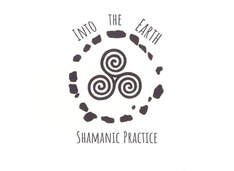
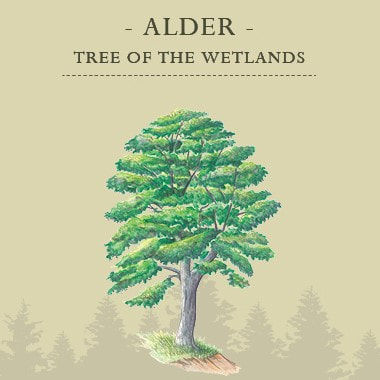
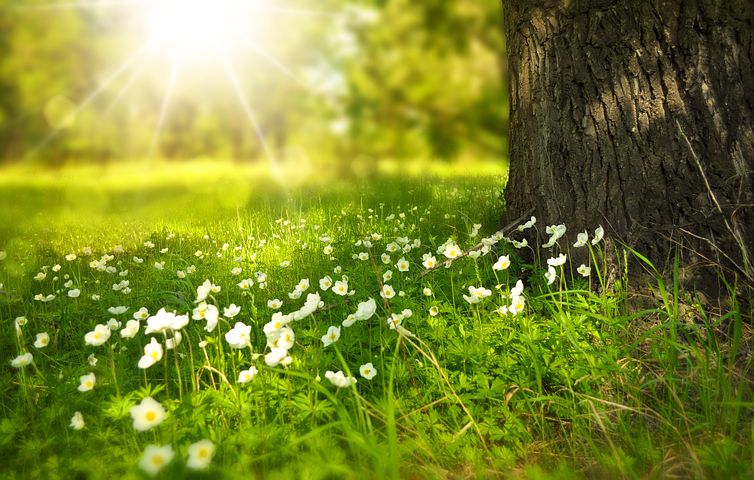
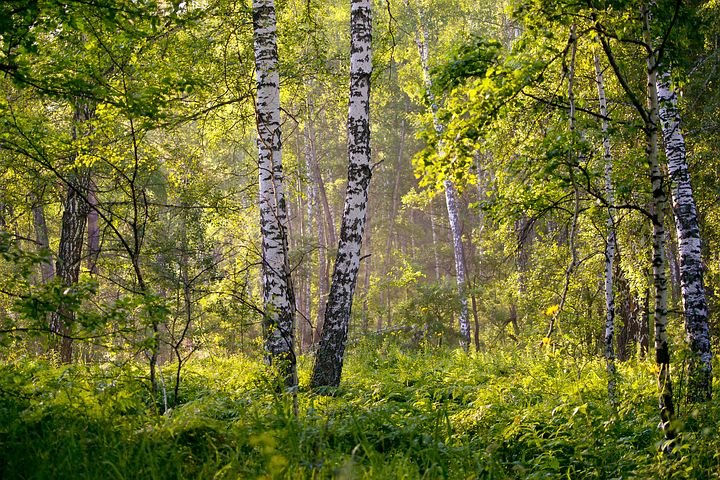
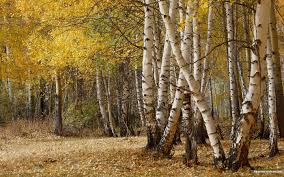
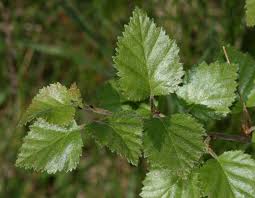
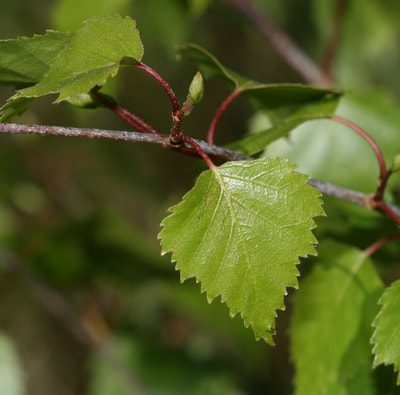

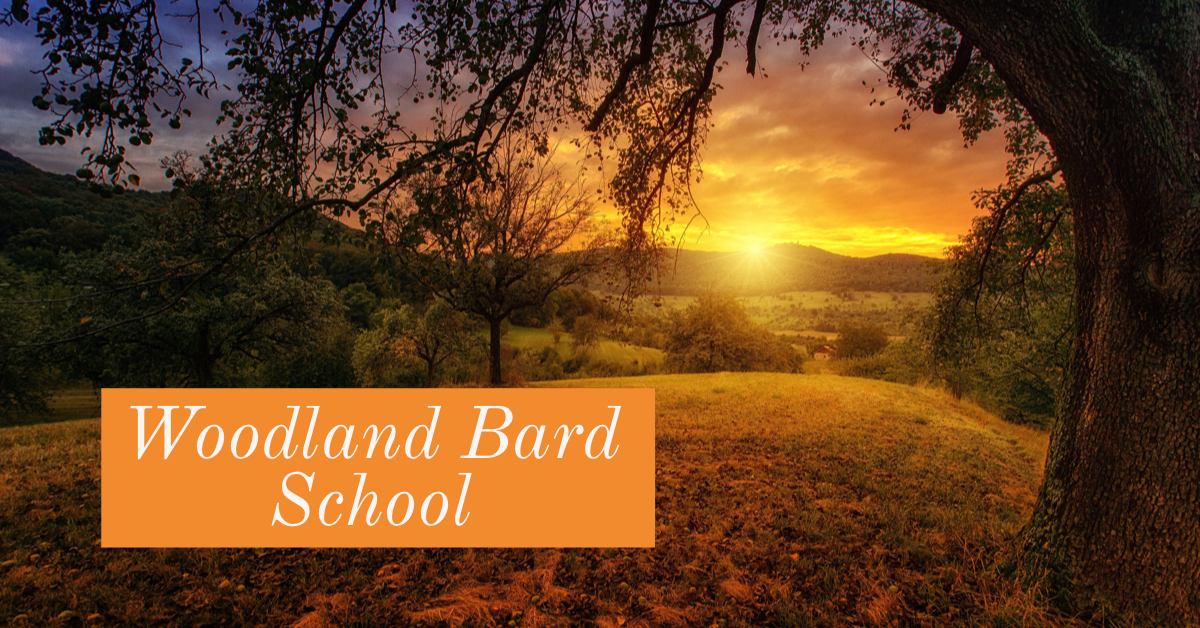
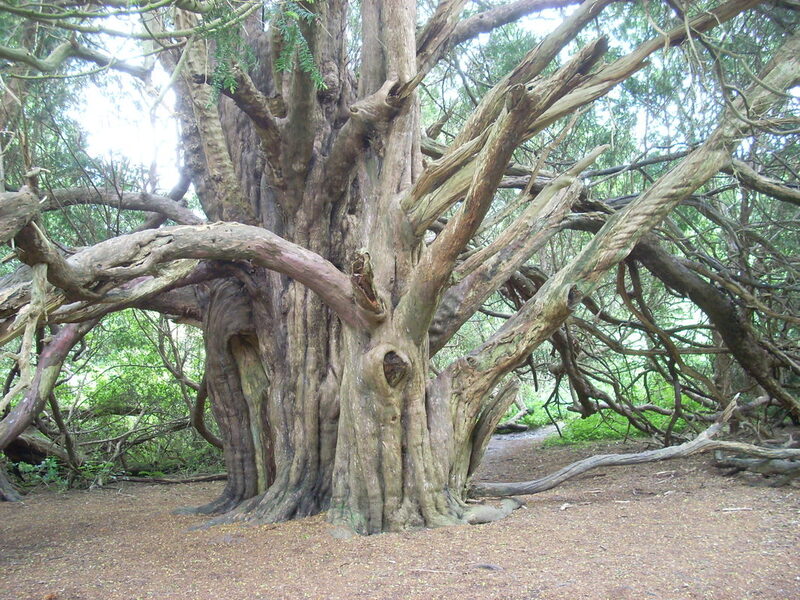
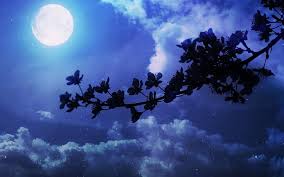
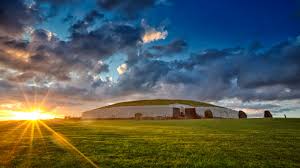
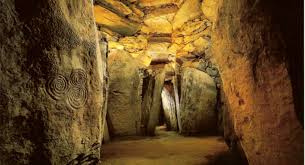
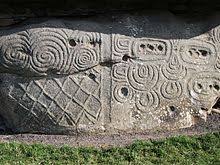
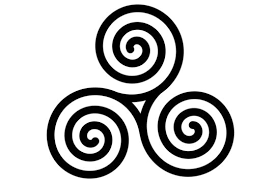
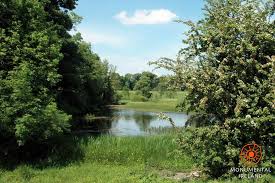
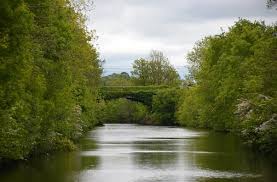
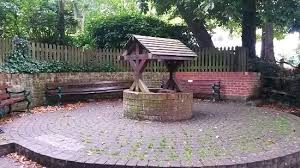
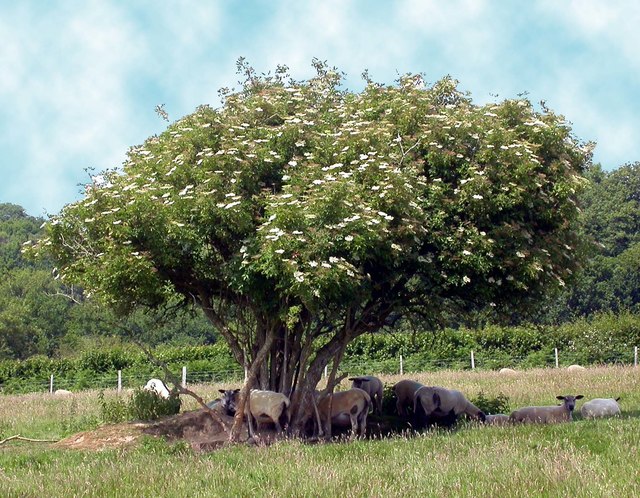


 RSS Feed
RSS Feed
